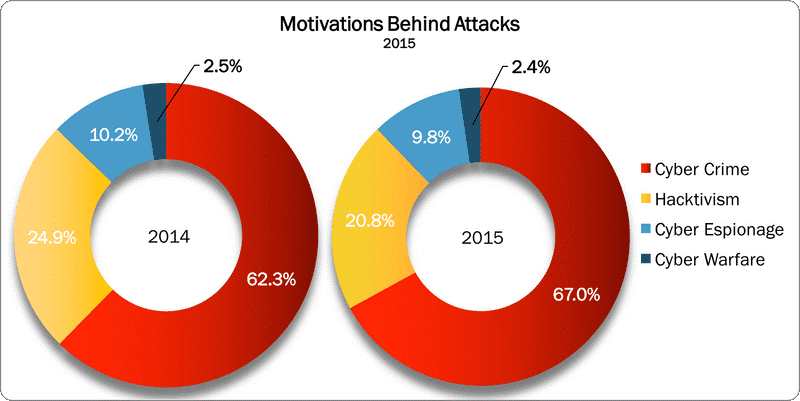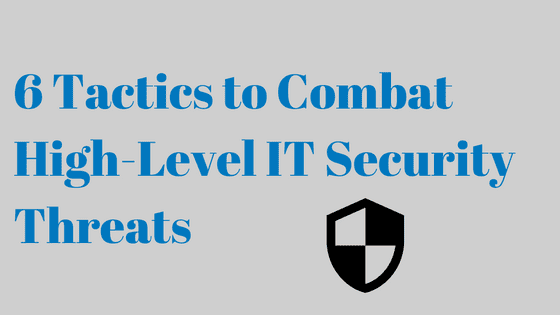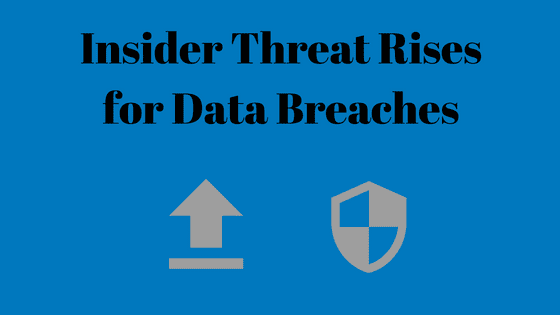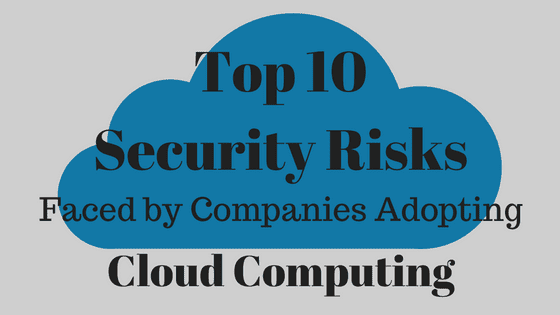The number of cyber-attacks and security threats across the country and throughout the globe has gone up – but there’s an even more critical problem businesses should worry about. The complexity and threat-level of those security breaches have increased, becoming more sophisticated. It’s increasingly more common for hackers to target larger companies—oftentimes, many at once. Today’s malware tends to have many different attack vectors compared to malware five or ten years ago. This means IT security is even more integral now to the overall health and integrity of your company’s data infrastructure.
One of the most recent cyberattacks to make the headlines sent ripples out across the world as Internet usage flickered out for many large businesses and popular online services, such as Netflix, Twitter, and the Financial Times. The attack on the New Hampshire-based Internet performance management company, Dyn, was carried out as a distributed denial-of-service (DDoS) attack that came in waves. The result was literally hundreds of thousands of devices around the world infected with malware.
Hackers are becoming emboldened, and as activity from hacktivist groups and both cyber warfare and espionage remain somewhat steady, the world of IT security has to rise to the challenge of protecting and preventing future attacks. If the DDoS on Dyne was any indication of the scope or power of hackers out there, then companies most certainly need to reevaluate their level of IT security to ensure they have something capable of handling high-level security threats such as these.
Insider Threat Rises for Data Breaches
Data breaches have been a challenge to many businesses over the past twenty years. Cyber criminals have held files for ransom, leaked personally identifiable information (PII) to third parties, and turned millions of dollars’ worth of hardware useless. The threat of being exposed to hackers has always been a fear in the minds of computer users; however, there’s a threat as insidious lurking somewhere much closer to home.
As computing moves toward cloud-based operations and accessibility improves, employees have earned a spot on the list of threats to your company’s network.
In a previous post, we discussed the consequences of unsafe browsing while at work, but the threat posed by insiders isn’t always accidental or due to negligence. Recently terminated employees or those from the past with a grudge could spell trouble for companies if the proper measures aren’t taken.
How to Lower Your IT Costs
In the continued push to reduce overspending, increase workplace efficiency, and develop a fiscally sound work model, companies often neglect working toward lowering their IT costs. Whether your business has an in-house IT department or you outsource your IT work to another company, there are precautions you can take to avoid overpaying and being sold services you can’t benefit from.
One of the most valuable pieces of advice for companies shopping for IT services or attempting to make the most out of their internal IT teams without breaking the bank is to favor regular maintenance and proactive monitoring versus waiting to fix a problem when it occurs.
How to Protect Your E-commerce Website from Hackers and Fraud
The customer journey is a long but rewarding process, so when your e-commerce website prospects finally become customers and reach your checkout page, you want to make sure things go smoothly. You’ve done a lot to get your visitors to the checkout page, from providing high-resolution images and accurate product descriptions to a responsive design and smooth customer experience, but there’s one critical conversion element every e-commerce site needs.
Security. Specifically, customer security.
Most online stores require the same kind of information, all of which fall under either the personal or financial category. This data includes things like credit card numbers, full names, physical mailing addresses, email addresses, and more. The information a customer is required to provide to conclude an online transaction can be devastating if lost, which is what has happened to many online retail stores who have had their security breached by malware and hackers.
According to the Global Fraud Attack Index for 2016 Q2, “there were 27 attacks for every 1,000 transactions conducted in 2015 Q4, which is 11% higher than reported in 2015 Q3 and a 215% increase from 2015 Q1.” Between Q4 of 2105 and Q1 of 2016, the attack rate was higher than 4X for digital goods and doubled for luxury goods.
Whether or not customer information has been stolen or simply lost, your security and recovery plan should be able to address malicious hackers and fraud. Providing top-notch security for your e-commerce site is the best way to give your customers peace of mind, retain their business, and grow yourself as a respected, trustworthy online store.
Proactive security is necessary for the prolonged protection of your website and your customer transactions. We’ve detailed five actionable tips below to securing your site against fraud and hackers.
HummingBad Malware Infects Over 10-Million Android Devices
More than 10 million Android phones have been infected with an annoying little piece of malware called HummingBad.
This malware looks to exploit a device’s data by stealing and selling it. While its tactics are fairly run-of-the-mill for malware—drive-by-download, data theft, etc.—HummingBad goes a step further by attempting to root itself.
Gaining “root access” to a device allows malicious users to gain administrative-level control capable of overriding any Android subsystems. Hackers exploit this mode of infection to cause the most damage, and to make their malware difficult to remove. Once HummingBad has rooted itself, it can force the user to click on ads and download apps, but there’s a little more to this malware than that.
Top 10 Security Risks Faced by Companies Adopting Cloud Computing
The cloud has been a miracle to many businesses as they merge or migrate their data to the off-site storage service. See, the beauty of the cloud is all about its accessibility. Companies can manage or access data from anywhere they are, putting key information at their fingertips without a trip to the office.
Though we previously covered some of the benefits of migrating to the cloud, it’s become apparent that some companies are making that switch with only half the facts. Here’s a look at the top ten security risks that comes with migrating to the cloud.
How Outdated IT Assets Can Lead to Security Problems
Most of us know the value of keeping our software updated. This includes having the latest virus definitions installed and our operating systems and programs patched against the latest bugs. It’s really just standard practice to update these things.
Why?
It keeps our computers and networks running smoothly while ensuring any security vulnerabilities are fixed before someone can take advantage of them. If you don’t update your software, those weak points in your network security—a popular program or bug-filled browser—could be used by hackers to infect your system with malware. And if outdated software presents a security risk, imagine what kind of damage antiquated hardware can do to your security efforts.
Old hardware can create vulnerabilities that cyber criminals can take advantage of to breach systems. Not only do you have to worry about individuals creating windows of opportunity, but now there’s the chance that by simply using your software or equipment—because it’s outdated—could be creating weak spots for hackers to exploit in your network security.
New Mobile Threats to Business Apps
Mobile apps have made the lives of employees everywhere infinitely better, and more efficient, as enterprises lean towards virtual offices and establish BYOD policies. Apps designed for the business sector or that improve productivity have steadily risen over the last couple of years. The disadvantage to relying on these helpful apps to get work done lies in their inherent vulnerability to security threats such as malware.
A growing trend in malware development is to create apps capable of impersonating legitimate apps, and using this ‘bait-and-switch’ technique to trick unsuspecting employees and CEOs into downloading the fake app whose real purpose is to deliver malware. The threat of business-spoofing apps has been a real challenge for enterprises as even very popular mobile applications have been impersonated, including:
Are Passwords Going the Way of the Dinosaurs?
Passwords are one of the most common methods for securing sensitive information across networks. However, recent trends in the IT community have shown an increasing interest in multi-factor authentication—solutions that go well beyond the password.
We covered the essential elements of two-factor authentication in a previous blog post, but the question remains: why have passwords fallen out of favor?
The answer is threefold.
How to Implement Your Own BYOD Policy
BYOD, or Bring Your Own Device, allows employees to work from and access company data from their smartphones and tablets. Many businesses have begun adopting BYOD policies as it gives their employees not only a sense of freedom but because it also saves the company money on tech costs. Telecommuting has risen in popularity with both employers and workers, and a BYOD policy offers a way to ease that transition and make the process more effective.
Although BYOD seems straightforward, there are a few integral factors that must be taken into account in its implementation; namely, security and efficiency. There’s also the matter of making the policy worthwhile to employees in the first place.
Many enterprises expand their BYOD policy to include all personal devices employees elect to use for connecting to the corporate networks. This means proper utilization—establishing clear and effective security protocols—is paramount to developing an all-encompassing solution to how these devices should be used, and how the company can ensure that device and its use are not abused or compromised.











